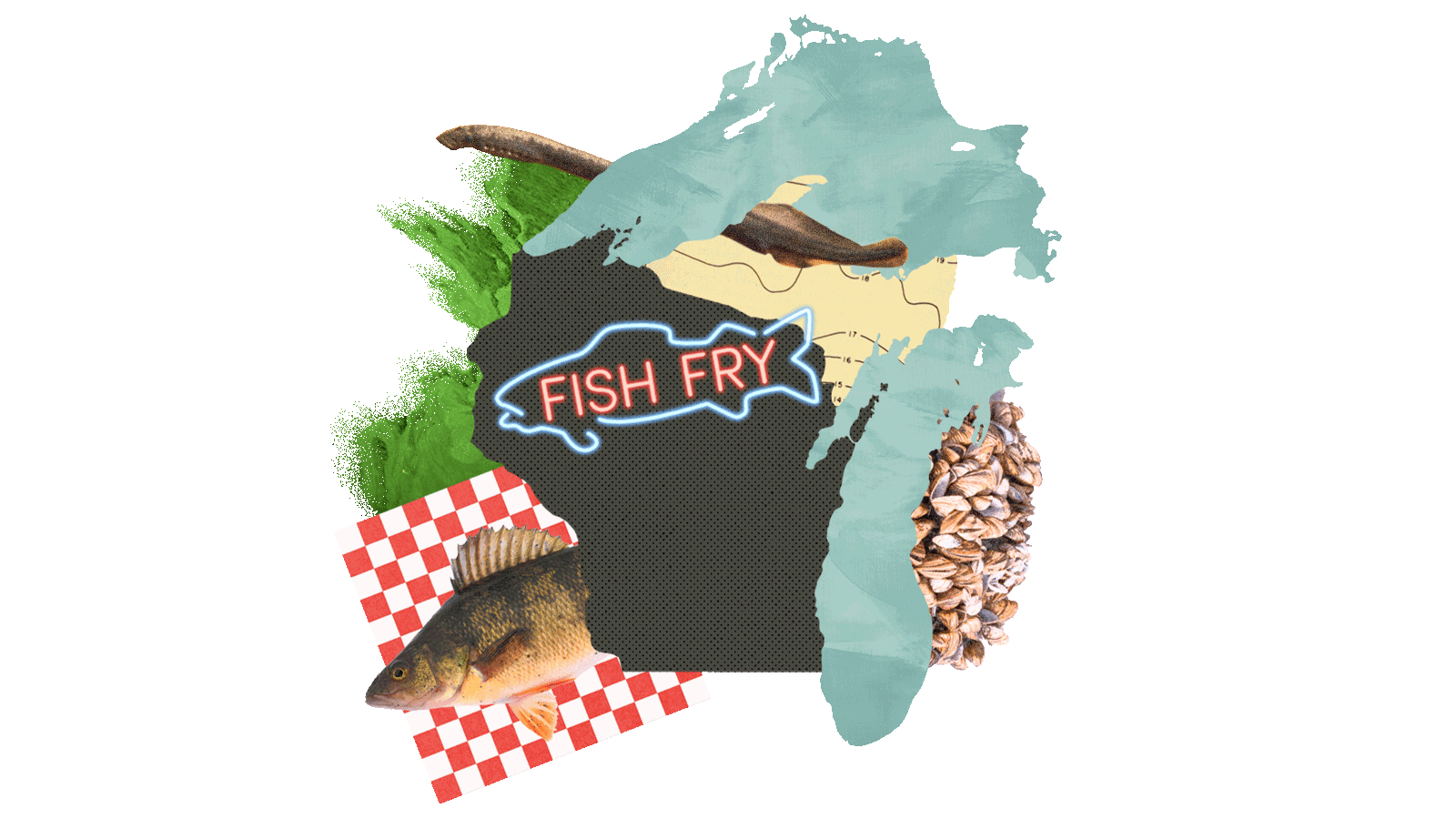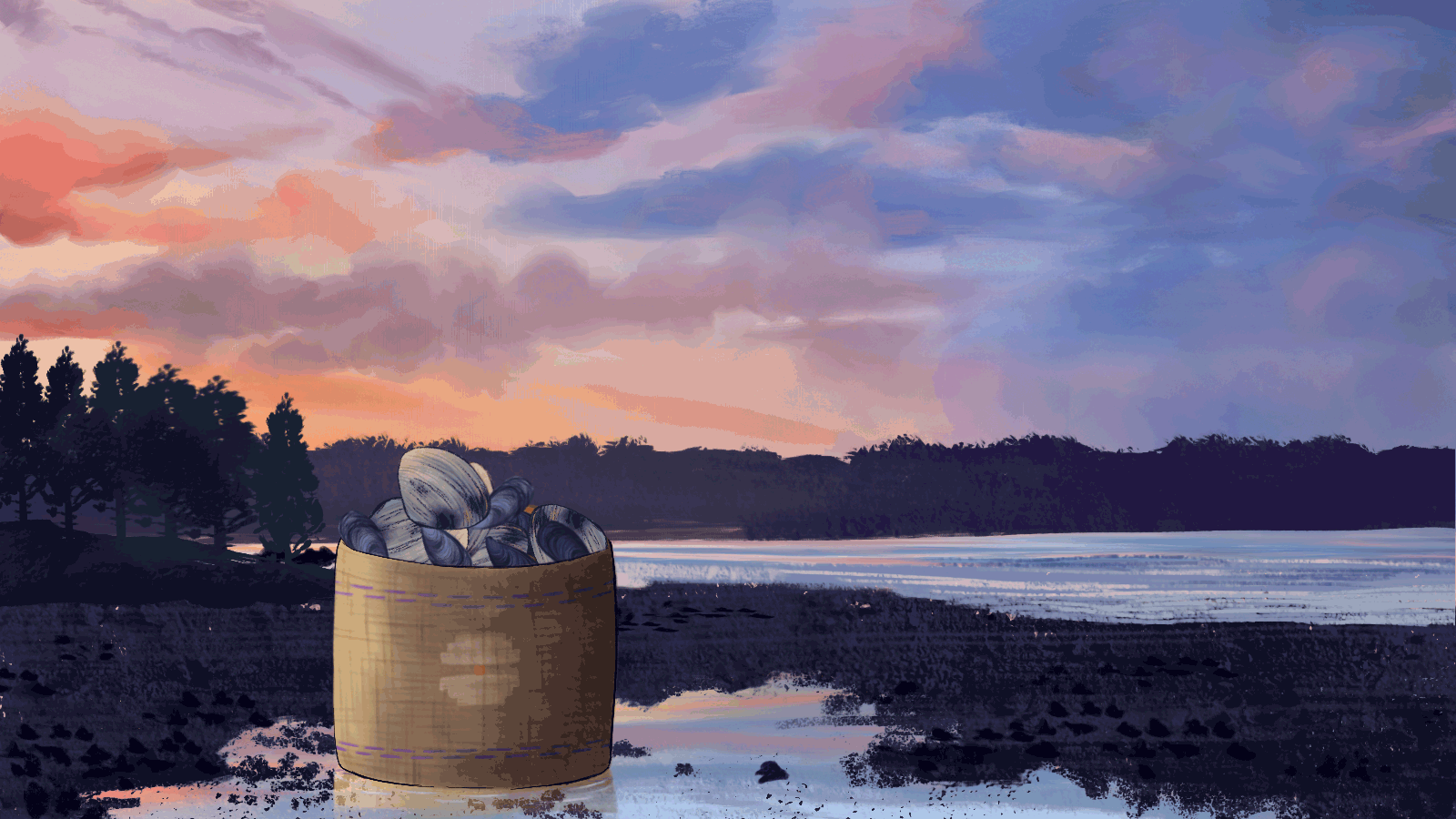On any given Friday night in Wisconsin, you’re probably eating fish.
A weekly offering of fried fish stands out as a cultural institution in a state known for its beer, football, and cheese. The Wisconsin fish fry— a regional dish consisting of battered and fried fish, generally served with fries or potato pancakes, cabbage or coleslaw, rye bread or a dinner roll, and topped off with a lemon slice —has been a hearty Friday night staple of local bars, village halls, and supper clubs.
This dish is more than just a line on a menu, it’s how people have defined their Friday nights for decades.
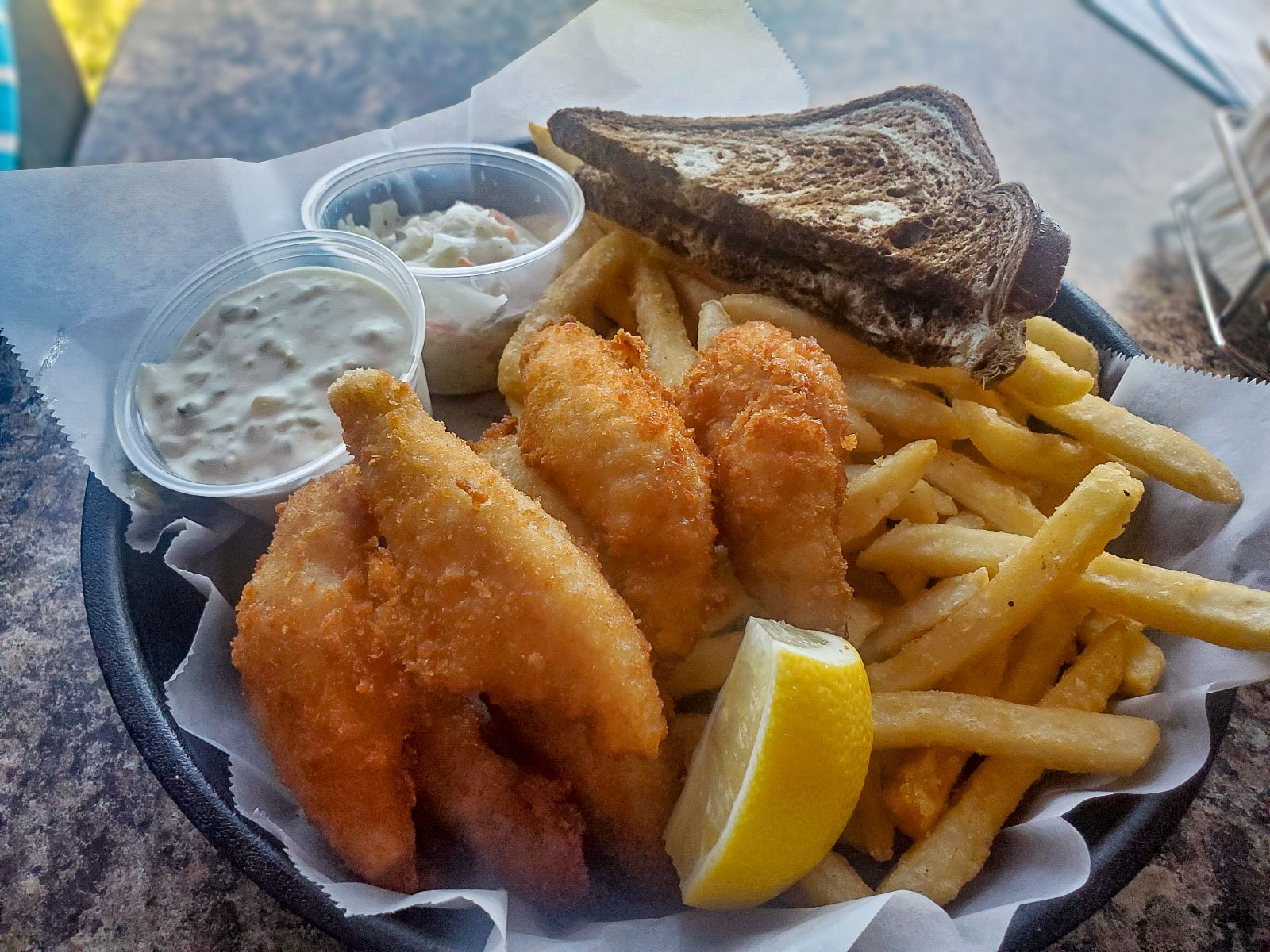
Now, fish frys will have to adapt to a changing climate. From the Hatch green chiles in New Mexico to gumbo in Louisiana, climate change is altering regional food traditions across the country.
Wisconsin lakes are warming and becoming more hospitable to invasive species and extreme weather conditions thanks to a global rise in temperature, challenging the future of this statewide ritual. Commonly fried fish species like perch, lake trout, and whitefish have declined, causing Wisconsin restaurants to look beyond their own lakes for certain fish, or abandon some altogether.
Two Great Lakes — Michigan and Superior — touch Wisconsin’s shores and have experienced a steady rise in temperature since 1995. Even the deepest depths of the lake system are starting to warm up and the average maximum ice cover on the Great Lakes has dropped over 20 percent in the last 50 years.
The fish fry is predicated on Wisconsin “geography, religion, and history,” said Terese Allen, an expert on the state’s culinary history and a co-author of Flavor of Wisconsin: An Informal History of Food and Eating in the Badger State.
Cooking fish for large groups predates settlers, with evidence of Indigenous fishing practices dating back thousands of years in the Great Lakes. Allen said when Indigenous communities and colonizers intermingled in a region “surrounded by and intertwined with waterways,” the settlers found preparing fish in mass to be a useful skill. Many immigrants who settled the state were also Catholic and wouldn’t eat meat on Fridays, a factor in the dish’s growth and popularity.
Fish frys boomed during Prohibition, Allen said, as taverns would sell fried fish for cheap to get customers in the door during a time when bars struggled to survive. By the 1960s, in a post-Prohibition era and the end of the Friday meat ban for Catholics, Wisconsinites across the state were hooked.

As a definition for the uninitiated, Allen said a fish fry is simply an “end-of-the-work-week rite, in restaurants plain and simple to fancy, that brings people together to celebrate everyday life. It’s not a holiday, but it is a regular special occasion.”
It used to be that the fish for those occasions came from the state’s shorelines. Unfortunately, years of overharvesting and strained ecosystems led to a rapid decline in fish populations in these lakes. By the turn of the 20th century, a growing interest in commercial fishing across all Great Lakes (Huron, Ontario, Michigan, Erie, and Superior) led to the near-death of Atlantic salmon, lake trout, and ciscoes, with whitefish on a rapid decline. In 1954, the Great Lakes Fishery Commission was formed to protect and manage fish populations, protect the lakes from overharvesting, manage water quality, and fight another persistent problem — invasive species.
Two invasive species have caused lasting effects on Wisconsin fish; sea lampreys and zebra mussels. Sea lampreys are a parasitic fish famed for their rows of sharp teeth and funnel-shaped mouths, also known as the vampire fish, and have been called North America’s first invasive species. Sea lamprey nearly decimated all Great Lakes fish life, dropping the average catch weight from 15 million pounds down to a dismal 300,000 by the 1960s, according to the fishery commission. Baby vampire fish are killed using a set of chemicals known as lampricides, but climate change has made it harder to terminate these bloodsuckers. A study found that rising lake temperatures make lamprey larvae more resistant to chemicals meant to kill them.
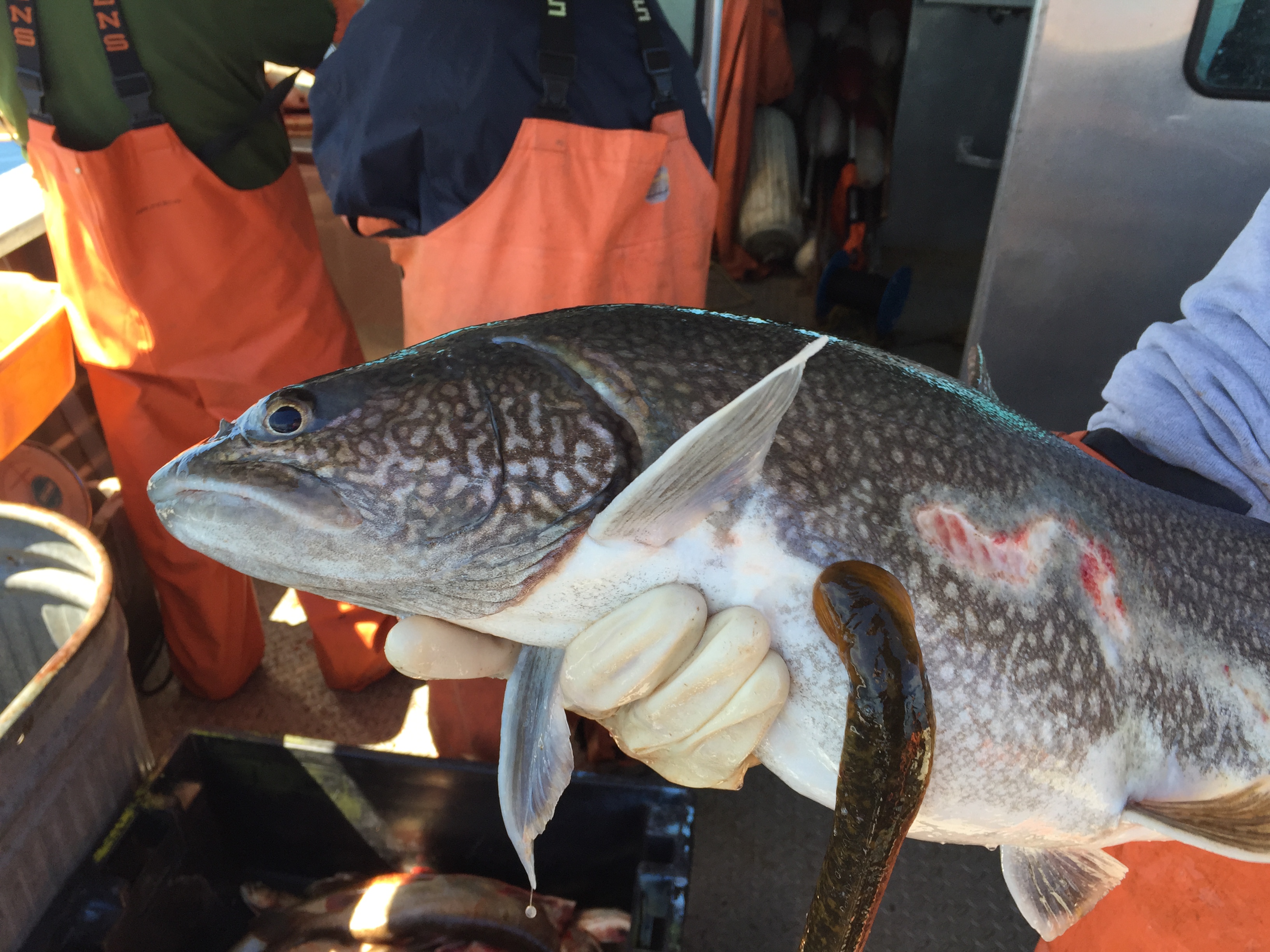
Yellow perch used to be caught, doused in batter, and fried by the bushel in the Great Lakes region until zebra mussels invaded. Zebra mussels are natives of Russian and Ukrainian freshwater systems and by the 1980s, found their way to Wisconsin’s lakes and bays. Spawning perch and zebra mussels both feed on and fight over phytoplankton and zooplankton.
This feud has left yellow perch populations in freefall from a few decades ago, with Lake Michigan perch on a continued decline, according to the Wisconsin DNR. Zebra mussels, much like a lamprey, will thrive in a warmer climate, according to a 2020 Hydrobiologia study, especially in northern higher North American latitudes, such as Wisconsin lakes. The infestation of zebra mussels has reached over 250 lakes in Wisconsin and once they set up shop, the invasive species is hard to get rid of.
Besides invasive species, extreme weather events on lakes, such as turbulent windstorms, are already harming Lake Michigan fish. The loss of ice cover has caused lakes to thaw faster and expose still developing fish to the elements. “If you have loss of ice cover, then you’re going to potentially have more wind events that could cause turbulence [and] could potentially bury eggs,” said Abby Lynch, a fish biologist and researcher with the United States Geological Survey’s Climate Adaptation Science Center.
Lynch’s research focuses on how climate change is impacting inland fish across the globe. Given the complexity of a given lake’s ecosystem, she said factors such as increased precipitation and periods of drought will also change how fish survive. Lake temperatures, she added, are a major concern when looking at the future of fish populations.
Climate change has also affected how whitefish, another popular fish fry option, are spawning. Whitefish spawn in the fall, egg in the winter, and hatch in the spring, leaving them vulnerable to seasons experiencing warming temperatures. As these changes to the lake systems happen, one of the most immediate impacts is where certain fish are staying or moving.
Lynch said anglers, fisheries, and shoreline communities are already seeing that when a lake changes, the species available at a specific location will change with time. Once certain species move out of a lake, the regional identity and industry associated with that fish will be forced to acclimate.
“Fish might be able to move and their populations may end up in a reasonable place, but there’s still a lot of political and social implications for those shifts that are not simple to deal with,” Lynch said.
Wisconsin perch reigned supreme at fish fries for decades. As the population shifts, stalwart fishers look for ways to get perch on plates.
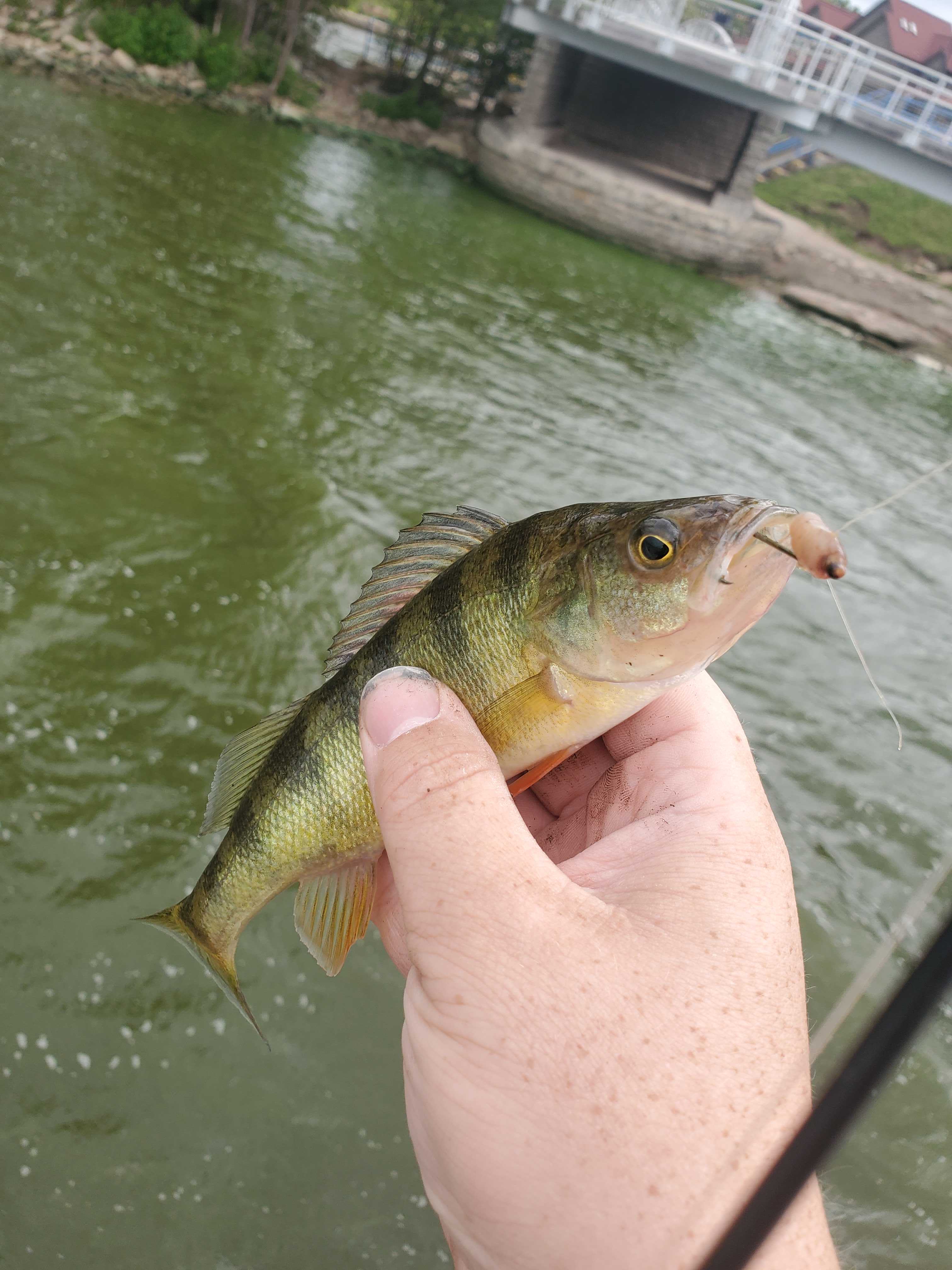
Doug Sackett, a retired firefighter and EMT from Beaver Dam, Wisconsin, started farming yellow perch at his Cedar Hill Farm pheasant hunting retreat eight years ago. Halfway between Madison and Milwaukee, his property now has three half-acre 15-foot-deep perch ponds with around 60,000 fish. He said he’s seen how limits on commercially harvested perch and other species harvest has caused restaurants and suppliers to look for other options.
“They’ve been cutting back on how many fish they are able to harvest which puts a big hurt on the Friday night fish fry industry,” Sackett said.
As taverns look to fill in the gaps left by declining populations, Sackett said he’s seen buyers supplement local freshwater fish for imported zander, a freshwater fish that resembles perch and is found in Finland and other European countries, as well as ocean perch, imported from fisheries in the Pacific Ocean.
Justin Kohlhagen, operating manager of VFW Memorial Post 9156 in Sheboygan, Wisconsin, stays tried and true to local fish as much as he can. The VFW, found just around the corner from a semi-pro baseball field and across the street from a Lutheran cemetery, has hosted a booming Friday night fish fry for the last nine years under his watch. Born and raised in Sheboygan, a city nicknamed the Malibu of the Midwest and known for freshwater recreation, Kohlhagen spent his childhood fishing perch with his family along Lake Michigan shores.
“You used to go off South Pier by the power plant and we could go out perch fishing,” Kohlhagen said. “You can’t do that anymore in Sheboygan, there’s no perch around here.”
Now Kohlhagen sources his perch from Lake Erie, a point of pride for the VFW. “It’s not zander and all that crap,” he said. “It’s actual fish.”
This commitment to Great Lakes perch has caused prices to rise in recent years, with a perch plate costing $22.50 a plate and Kohlhagen paying over $17 a pound for Great Lakes perch, but he said his Sheboygan customers want and expect fresh fish. Kohlhagen said the VFW operates at the same scale as restaurants or supper clubs and they turn over “tons” of tables each Friday night. “We’re the busiest fish fry in Sheboygan County. I can promise you that,” he said.
At the northern tip of the state, a fish success story has spawned from decades of conservation and management efforts. Lake Superior communities Bayfield, Red Cliff, and the Apostle Islands have seen a growth in fish species commonly used for fish frys.
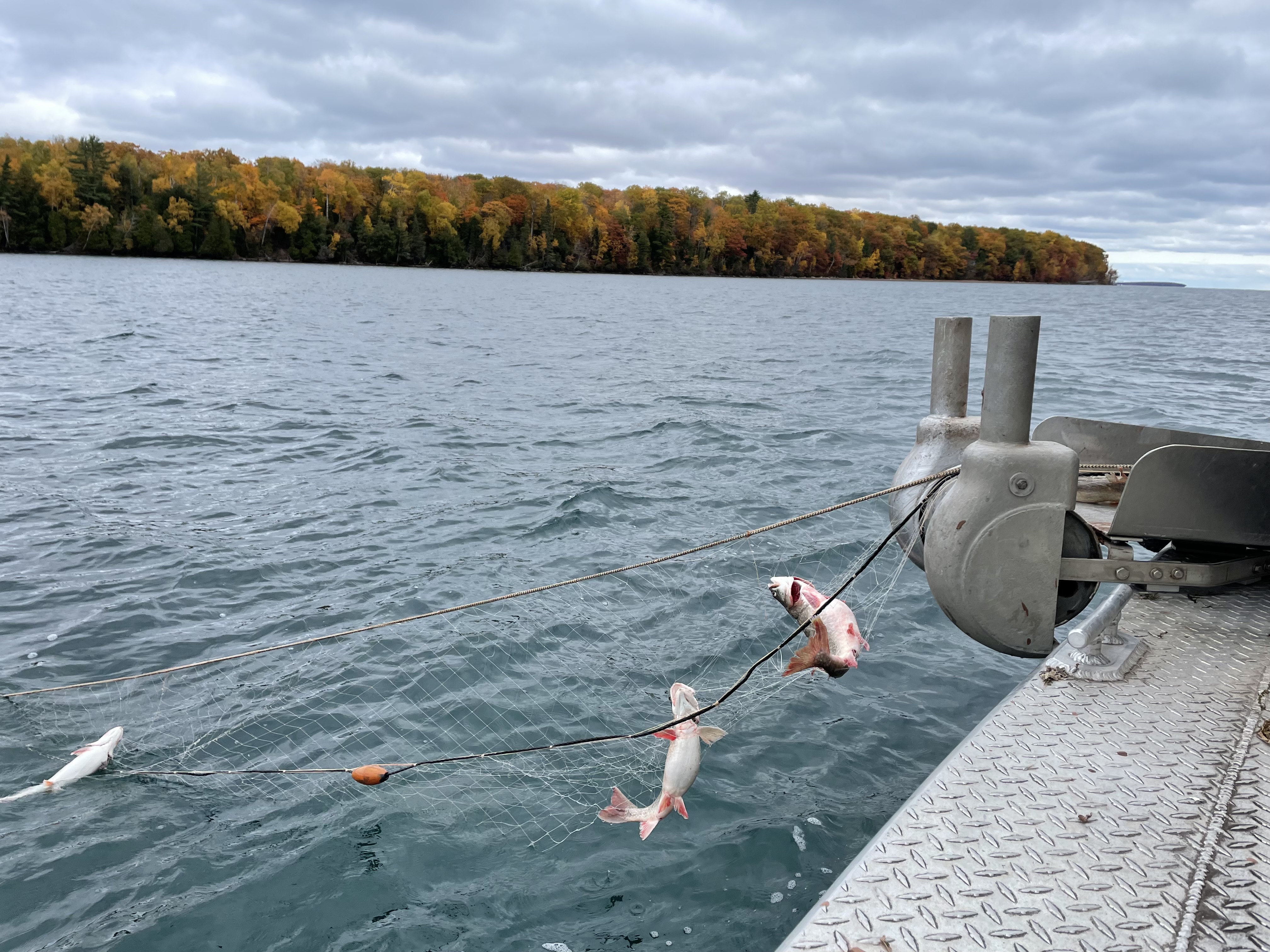
“Whitefish populations, right now, in the Apostle Islands region of Lake Superior are doing fantastic,” said Ian Harding, a fish biologist for the Red Cliff Fisheries Department. The agency is operated by the Red Cliff Band of Lake Superior Chippewa, one of Wisconsin’s eleven federally recognized Indigenous tribes.
Harding said whitefish populations declined in Lakes Michigan and Superior in the early 20th century like other species, but since the 1970s-80s fight for treaty and fishing rights, Superior whitefish have boomed with help from Red Cliff and the Wisconsin Department of Natural Resources conservation methods.
He said Lake Superior also sets itself apart due to the “great luck” of its chemical makeup, which has far less calcium buildup than Lake Michigan, a crucial component to the growth of zebra mussels. This invasive species has been spotted in Superior, but nowhere close to the levels seen in other lakes. In addition to its chemical makeup, Lake Superior has far less shoreline development than Lake Michigan, which is home to larger cities like Green Bay or Milwaukee. The lack of development along Superior has played a role in the health of the lake, and thus its fish, and is something he wants to protect.
“When projects pop up in the Lake Superior basin, or they want to develop Lake Superior shoreline, use water resources, or anything like that, generally in our position, we’re opposed,” Harding said.
The Red Cliff tribe operates its own fishing company that sells whitefish wholesale to restaurants across the state and beyond due to its booming harvest. Harding said Lake Superior whitefish and ciscoes, or lake herring, are among the most popular catches that make their way to plates in the state. Still, Lake Superior fish populations aren’t without problems. The lake is one of the fastest warming lakes in the world, and slowly but surely, warming waters have created growing toxic algae blooms.
“We should really take notes and learn from what’s happened to Lake Michigan and Huron so we can take steps so that doesn’t happen here in Lake Superior,” Harding said. “We’re really fortunate to have what we have right now and things generally have been going pretty well, but there’s warning signs out there.”

